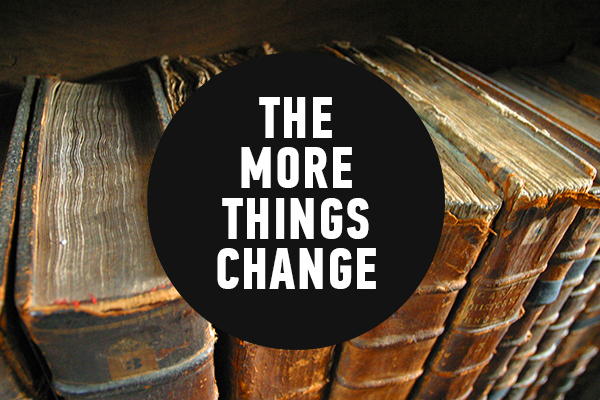The More Things Change | Issue 06
8 April - 14 April
April 8, 1820: On a small Aegean island that nobody had previously heard of, a peasant discovered a statue that would subsequently become one of the most famous pieces of ancient Greek art ever. It is now called the Venus de Milo, and its arms are still missing. It was also discovered with a plinth inscribed with the name of the sculptor, but this has been lost because it put the statue into a different time period to what the scholars had originally thought, and they didn’t want to look stupid. Despite these minor issues, the Venus de Milo is celebrated to this day as a shining example of ancient Greek artistic beauty. I had a classics lecturer who expressed his great distaste at it always being surrounded by other tourists taking pictures, which has so far prevented him from fulfilling his dream of getting close enough to properly “feel it up,” in his words. (If you find yourself with similar ambitions, there’s a replica in the Otago Museum.)
April 12, 1831: The British Army’s 60th Rifle Corps marched over the Broughton Suspension Bridge, and made it fall down. Apparently, while the corps were crossing it, they were amused that it began to vibrate in time with their footsteps. Presumably to enjoy this further they started to walk a bit differently and “whistle a marching tune,” and then the bridge collapsed. The water beneath the bridge was only 60 centimetres deep, so fortunately nobody drowned. There were a few concussions and broken bones, though, which was enough for the British Army to introduce a rule stating that all troops must break step when crossing a bridge – all for a story nobody’s heard since sixth-form physics.
April 14, 2003: The Human Genome Project, the first attempt to sequence and characterise the entire human genome, was announced complete. It took 13 years and a large number of laboratories, and didn’t tell us nearly as much as some people thought it would. It uncovered a few features that seem to be human-specific, and gave some insight into the amount of similarity between our genome and those of various other organisms, but that was pretty much it. Even the approximate number of genes in the sequence hasn’t yet been definitively pinned down (it seems to be far fewer than initially estimated). Some thought it might be a kind of illuminating discovery that would tell us why we have complex social customs and make art and write poetry, but science has yet to explain any of these.



